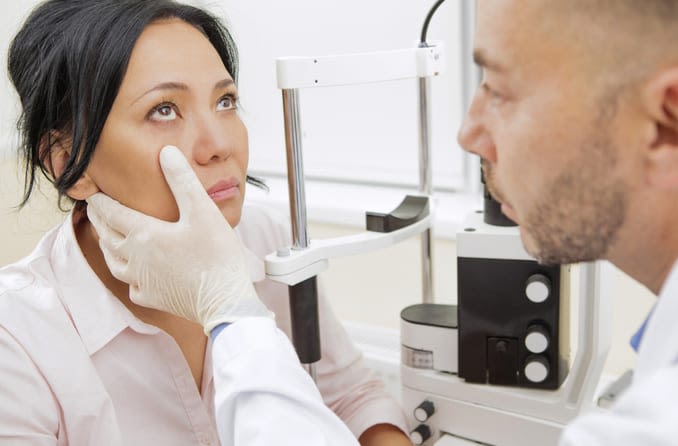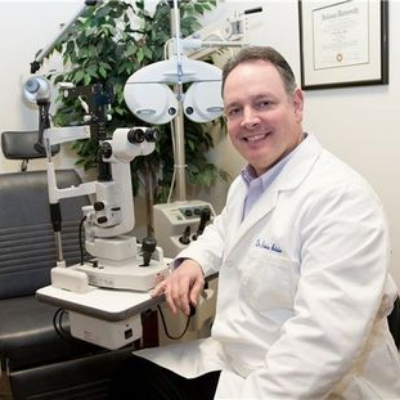Recognizing the Role of Your Eye Doctor in Preserving Vision
Recognizing the Role of Your Eye Doctor in Preserving Vision
Blog Article
Exploring the current Technical Innovations in Optometry and What They Mean for Optometrists
In the ever-evolving field of optometry, current technical improvements are reshaping exactly how practitioners come close to eye treatment. From the accuracy of Optical Coherence Tomography to the nuanced insights offered by AI-driven analysis devices, these technologies are setting new requirements in client analysis and therapy. Teleoptometry is poised to redefine availability, ensuring that know-how transcends geographical restrictions. As these improvements penetrate the practice, eye doctors are confronted with the challenge of embracing these devices to improve client results. The concern continues to be: just how will these technological changes redefine the functions and obligations within the occupation?
Innovations in Diagnostic Tools
Progressing the field of optometry, technologies in analysis tools have revolutionized the method eye treatment professionals evaluate and detect ocular problems and aesthetic problems. The past years has experienced considerable technological improvements, making it possible for more accurate and comprehensive examinations. Optical Coherence Tomography (OCT), for example, offers high-resolution cross-sectional photos of the retina, enabling for the early detection of diseases such as glaucoma and age-related macular degeneration. This non-invasive imaging method has actually become essential in modern optometric method.
Another trick innovation is the intro of sophisticated corneal topography systems, which map the surface curvature of the cornea with precision. These devices are particularly useful for fitting call lenses and diagnosing corneal problems. Electronic retinal imaging has changed typical ophthalmoscopy, providing thorough, breathtaking views of the retina that promote comprehensive visual exams.
The growth of wavefront aberrometry has actually also been critical, allowing the analysis of refractive mistakes with unrivaled accuracy (Eye Doctor Optometrist). This innovation aids in tailoring rehabilitative lenses and improving surgical results for refractive surgeries. Jointly, these analysis improvements empower eye doctors to provide exceptional client treatment, making sure early intervention and customized therapy techniques, eventually boosting aesthetic health results
AI in Person Management
Structure on the foundation of cutting-edge diagnostic devices, the unification of artificial intelligence (AI) in patient monitoring stands for a transformative jump for optometry. AI systems are significantly employed to improve performance, accuracy, and customization in person care. By evaluating large quantities of data, AI can recognize patterns and anticipate possible eye problems, allowing eye doctors to tailor interventions more effectively. This capacity is important in handling persistent eye illness such as glaucoma and diabetic person retinopathy, where very early detection and constant monitoring are crucial.
In addition, AI-driven systems help with streamlined individual interactions and management procedures. Automated organizing, online consultations, and personalized follow-up plans not only boost person complete satisfaction yet additionally enhance time administration for specialists. These systems can triage clients based on the seriousness of their conditions, making sure that those in critical requirement receive prompt attention.
Additionally, AI boosts decision-making by offering optometrists with evidence-based recommendations and therapy paths. By integrating information from digital health records, AI devices use insights that educate clinical choices, lowering the danger of errors and boosting person end results. As AI remains to develop, its function in person management will likely expand, reshaping the landscape of optometric treatment.
Advancements in Retinal Imaging
In the realm of optometry, retinal imaging has actually experienced exceptional technological developments that are boosting analysis capacities and individual care. Technologies such as Optical Coherence Tomography (OCT) and fundus photography have actually changed just how eye doctors evaluate the retina and envision.
Improved imaging techniques like OCT angiography are further refining analysis accuracy. This non-invasive technique maps blood circulation in the retina, providing important insights into vascular health without the demand for color injections. Furthermore, adaptive optics innovation is being integrated right into retinal imaging systems to remedy eye aberrations, delivering unprecedented image quality. Such developments facilitate the recognition of minute retinal adjustments that could indicate disease progression.
Additionally, improvements in expert system are increasing retinal imaging by enabling automated evaluation of big datasets. These systems aid optometrists in recognizing patterns indicative of pathology, thereby boosting diagnostic precision and efficiency. Jointly, these developments are changing retinal imaging right into a foundation of contemporary eye care, improving outcomes and increasing therapeutic possibilities.
Teleoptometry's Growing Role
Teleoptometry is progressively becoming an important part of eye treatment, driven by innovations in digital communication and diagnostic tools. This is specifically valuable in country and underserved locations where accessibility to specialized eye care is frequently limited.
The assimilation of expert system (AI) additional boosts teleoptometry, allowing the evaluation of aesthetic data and aiding in the discovery of ocular problems such as glaucoma and diabetic person retinopathy. AI-powered algorithms can swiftly interpret complicated imaging information, offering optometrists with useful understandings that strengthen medical decision-making.
In addition, teleoptometry supports connection of treatment via smooth assimilation with electronic health and wellness records (EHRs), allowing eye doctors to maintain extensive individual backgrounds. This makes sure that people obtain consistent and personalized treatment also when seeking advice from with different professionals.
In spite of these benefits, obstacles stay, including guaranteeing information safety and handling patient expectations. However, teleoptometry represents a substantial stride in the direction of more obtainable, reliable, and patient-centered eye treatment. As technology develops, its duty is poised to expand better.

Future Patterns in Eye Treatment
A myriad of cutting-edge trends is readied to reshape the future of eye treatment, driven by technical innovations and the developing needs of clients. One significant pattern is the assimilation of expert system (AI) in diagnostics, which assures to enhance the accuracy and performance of eye assessments. AI More Help algorithms can analyze large amounts of information from retinal pictures, potentially discovering problems like diabetic person retinopathy and glaucoma earlier than standard methods.
In addition, tailored medicine is acquiring traction in optometry, with hereditary screening notifying tailored treatment plans. This approach aims to enhance patient results by customizing interventions to individual genetic profiles. Wearable innovation, such as clever contact lenses, is also imminent, providing real-time surveillance of intraocular pressure or sugar levels, hence offering constant insights into eye and systemic health.
The fostering of increased reality (AR) and digital truth (VIRTUAL REALITY) in training and person Visit This Link education and learning is one more arising trend. These innovations use immersive experiences that can improve understanding and abilities both for eye doctors and patients. As these trends develop, optometrists should remain abreast of technical developments to supply sophisticated care, guaranteeing better individual results and contentment in the vibrant landscape of eye treatment.
Conclusion

Collectively, these diagnostic improvements empower optometrists to provide exceptional individual treatment, ensuring very early treatment and tailored treatment techniques, eventually enhancing visual wellness results.

As these modern technologies continue to advance, eye doctors must adjust and integrate them into practice, eventually optimizing operations effectiveness and boosting the standard of eye care provided to clients.
Report this page